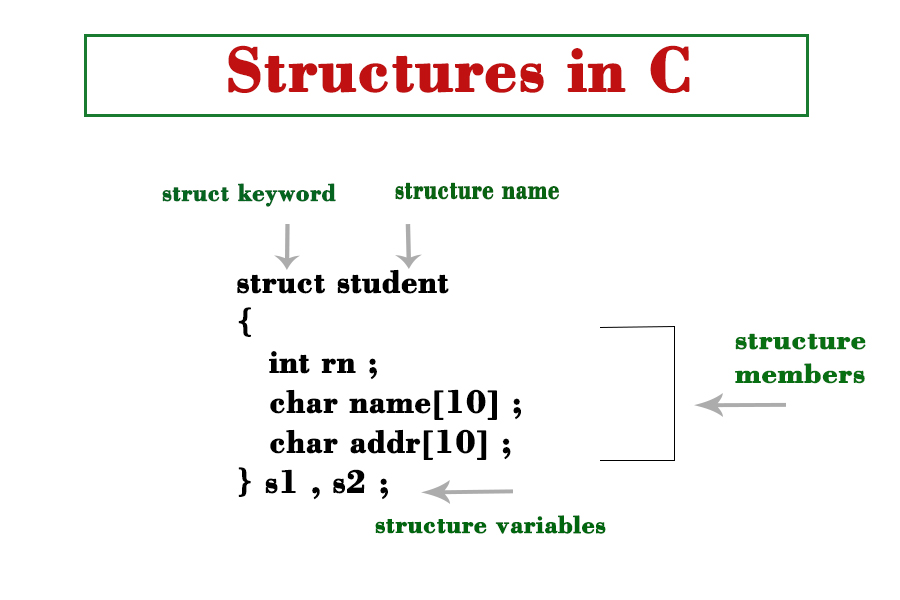The C programming language is renowned for its efficiency and versatility, making it a popular choice among developers for various applications. One of the most powerful features of C is its ability to utilize structures, which allow for the grouping of different data types into a single unit. When it comes to printing these structures, the concept of "C print struct" becomes essential for developers looking to display the contents of their structured data effectively. In this article, we will explore what a struct is in C, how to print it, and some practical applications that illustrate its importance.
Understanding the fundamentals of C print struct is crucial for anyone looking to master the language. Structures (or structs) in C are user-defined data types that allow developers to combine data of different types into a single entity. This enables better organization of data, which is vital in larger programs where multiple data types need to be managed. The ability to print these structs efficiently not only helps in debugging but also in presenting information to users in a clear format.
In this comprehensive guide, we will break down the concept of C print struct into manageable sections, addressing common questions and providing examples to enhance understanding. Whether you are a beginner or an experienced programmer, grasping the nuances of printing structs in C will enhance your coding skills and improve your program's functionality.
What is a Struct in C?
In C programming, a struct is a data structure that allows developers to combine different data types into a single unit. This is particularly useful for organizing complex data. For example, if you wanted to represent a student, you might need to combine a name, age, and student ID, each of which could be different data types: strings, integers, etc.
How Do You Define a Struct?
Defining a struct in C is straightforward. Here’s a simple example:
struct Student { char name[50]; int age; int studentID; };This code creates a struct named "Student" that contains three fields: name, age, and studentID.
Can You Create Instances of a Struct?
Yes, once a struct is defined, you can create instances of it. For instance:
struct Student student1;This creates an instance of the Student struct, allowing you to access and manipulate its fields.
How Do You Print a Struct in C?
Printing a struct requires accessing each of its fields individually. For example:
printf("Name: %s\n", student1.name); printf("Age: %d\n", student1.age); printf("Student ID: %d\n", student1.studentID);Using the 'printf' function, you can display the contents of each field to the console.
What Are Some Common Use Cases for C Print Struct?
- Displaying user information in applications
- Debugging complex data structures
- Generating reports based on structured data
- Facilitating data storage and retrieval
Can Structs Improve Code Organization?
Absolutely! By grouping related data, structs make code easier to read and maintain. This organization is especially beneficial in larger projects where many different data types need to interact.
How Does C Print Struct Facilitate Debugging?
When debugging a program, understanding the current state of data is vital. C print struct allows developers to output the current values of a struct's fields, helping identify issues in logic or data handling. By printing structs at various points in the program, developers can trace the flow of data and make adjustments as necessary.
Are There Limitations to Printing Structs in C?
While printing structs is straightforward, there are some limitations. For example, if a struct contains nested structs or arrays, you must write additional code to print those fields. Additionally, C does not provide a built-in way to print an entire struct in one command, which can be cumbersome for complex structures.
Conclusion: Why Mastering C Print Struct Is Important?
In conclusion, understanding C print struct is a fundamental skill for any C programmer. By mastering the ability to define structs, create instances, and print their contents, you enhance your coding proficiency and improve the readability and functionality of your programs. Whether you are working on small projects or large systems, the ability to effectively manage and display structured data is crucial.
Article Recommendations
- Kaihla Rettinger
- Cast Of The Marvelous Mrs Maisel
- Liam Payne Picture
- Rib Tattoos For Men
- Joe Metheny
- Michael Rainey Gf
- What Is The Real Name Of Bruno Mars
- Ben Harper
- Actors Superbad
- License Expired Over A Year
Also Read


